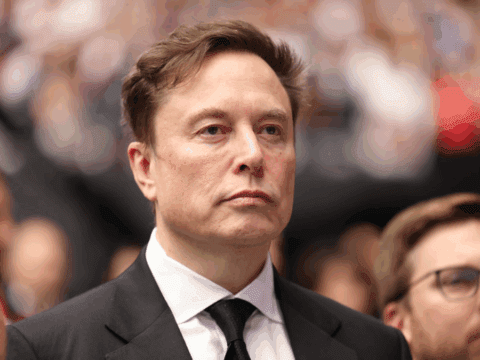During June’s NATO summit in The Hague, Prime Minister Mark Carney pledged — alongside other NATO leaders — to raise Canada’s defence spending within 10 years to five percent of the country’s GDP, estimated at $150 billion annually.
“We are protecting Canadians against new threats. I wish we didn’t have to,” he told the post-summit press conference. Those threats include Russia, Iran, and a U.S. president who jokes about “annexing” Canada.
You may unsubscribe from any of our newsletters at any time.
As part of the European Union’s recent trade deal with the United States, the bloc agreed to purchase U.S. military equipment (though, the deal doesn’t specify the amount). While Carney has floated alternatives for Canada — including investing more in Europe and developing a military-industrial complex here at home — avoiding U.S. military equipment altogether is challenging. And if the prime minister plans to keep expanding homegrown defence manufacturing, Canada has to avoid the same issues that plague the U.S.’s arms industry.
The United States spends more on the military than any other country in the world. It exports 43 percent of the world’s weapons and provides 70 percent of NATO’s equipment. “The defense industry has become a permanent, in fact defining feature of the U.S. economy,” wrote Forbes in 2023. A big part of that power comes from lobbying: U.S. defence companies spend millions every year to influence Congress and secure government contracts. According to a new report from the Quincy Institute for Responsible State Craft and Cost of War project at Brown University, private firms received 54 percent of the U.S. Department of Defense (DOD) discretionary spending between 2020 and 2024.
“The majority of the department’s budget goes to corporations, money that has as much to do with special interest lobbying as it does with any rational defense planning. Much of this funding has been wasted on dysfunctional or overpriced weapons systems and extravagant compensation packages,” William D Hartung an author of the report, told The Guardian.
Historically, Canada — like most of the Western world — has relied on the U.S. for military hardware. But that relationship isn’t without costs and complications. In 2022, the government committed $19 billion to purchasing U.S. F-35 jets, which President Trump has since joked publicly about putting a secret “cancel switch” in so that they wouldn’t be able to fight off U.S. planes.
In 2025, the U.S. Department of Defense (DOD) requested US$893 billion USD for new equipment, which the Trump administration wants to increase to US$1.1 trillion in 2026. This is despite the fact that the DOD has appeared on the U.S. Government Accountability Office’s (GAO) High-Risk List for waste, fraud and abuses for 34 consecutive years.
“Defence contractors routinely overcharge the Pentagon by 40 percent – and sometimes more than 4,000 percent,” Senator Bernie Sanders told Congress last year. He noted two fall 2024 court decisions that fined defence manufacturers Raytheon and Lockheed-Martin US$950 million and US$70 million, respectively, for overcharging.
This should raise red flags for Canada, which buys from the same companies. Lockheed-Martin, for example, manufactures the F-35 fighter jets that Canada committed to purchasing three years ago — a deal now projected to cost 50 percent more due to inflation, currency fluctuations and increased demand, according to a recent report from the auditor general.
But like so many NATO countries, Canada is facing pressure to act: it wants to help defend Ukraine, deter Russian aggression and maintain domestic stability. As possible alternatives to relying on the U.S., Canada joined the European Union’s rearmament plan, ReArm Europe, in June to change how it supplies its military. But another crucial part of the solution may be building our own military-industrial complex — a move that has already begun with the governement’s recent commitment to build three new warships domestically.
- Canada’s military emissions are standing in the way of its climate change commitments
- Will Trump use military force against Canada? This author says he might.
- MP Rob Oliphant on faith, politics and Canada’s future
In July, Carney met with Canada’s premiers in Huntsville, Ont., where many expressed strong support for the idea of expanding domestic military manufacturing. “We have huge companies like Bombardier, like the Davie shipyard, which can create tens of thousands of defence jobs,” Quebec Premier Francois Legault said at a news conference following the event.
If Canada truly intends to establish a domestic military-industrial sector, now is the time to set democratic guardrails. Concerned Canadians must push for restrictions on military lobbying, strong transparency requirements and independent oversight. If successful, this would allow Canada to set its own course in global security — one rooted in domestic values, responsible governance and strategic independence.
***
With files by Nicole Schmidt.















Thanks Broadview!
It is time for Canada to improve the state of our military, which is currently in bad shape and falls far short of what a country should have as a basic national requirement. Making those improvements won’t be easy, but one of considerations should be more self reliance in terms of acquisition. The ongoing debate over the acquisition of B.C. ferries from China is a similar example.
By the way, the paratroopers in the photo are from Italy. The Italian flag on their uniforms is a clue. The situation in Canada isn’t that bad!
Thanks for your keen eyes, Paul! We’ve updated the photo.
Ideally, of course, a non-furtherance of military spending would be best. The idea that the world’s nation’s should simply ignore the US Administration is a treasured thought. Aggression against Canada actually comes from only one source (say no more). Russian ambitions are not likely in our lifetime to go much beyond Ukraine. Other than the Taiwan threat, China, despite its burgeoning military force, is operating according to its internal need to keep its job market up and running as opposed to simply having the most weaponry. Quite obviously the world’s political leaders, need to “feel” what the reality of geopolitical aggression amounts to. Although the “feeling” approach seems sort of airy-fairy, at the end of the day it comes to that anyway. I am not a Canadian, but what I observe of Canada and its peoples is reassuring. Canada’s current burdens, and the way the country handles them, could help to establish a global return to sanity. My thoughts and prayers go with you.
Yes!